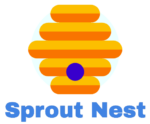When you apply for a job, a hiring manager or recruiter will most likely view your resume first. It is crucial to select the appropriate resume template because there is a lot at stake. Knowing the best structure and layout to use to showcase your special qualifications and abilities will help you create a good first impression on your potential employer.
Read More: Resume Templates
What is a template for a resume?
A professional resume template serves as a formatted manual for writing resumes. Experts in graphic design produce visually appealing and simple-to-read templates that use a choice of corporate typefaces and white space to break up the text.
Multiple formats, styles, and design elements are combined in resume templates. By using a template, you may concentrate on content addition, rather than formatting and design, that showcases your skills, experiences, and career objectives.
Options for template layout
There are several resume formats to select from, based on the position you are applying for and your special set of skills. Someone looking for a creative position may, for instance, create a CV that highlights their originality. A more simple layout can be preferred by someone working in a highly regulated industry like banking or finance.
Candidates should incorporate keywords from the job description into their resumes and utilize a readable font, regardless of the style they select. Doing so can improve the chance that the resume will pass through an application tracking system (ATS) and reach a hiring manager. Three common template layout alternatives are shown below:
The Traditional
Standard typefaces like Times New Roman or Arial are frequently used in the classic resume template style. Standard typefaces make it easier for an ATS to read your CV. Typically, this style has no borders or images and only one color. Experience, education, certificates, and degrees are often listed underneath the applicant’s name and basic information in a single column that serves as the header.
This resume style uses italics, bold, or underlined text to make statements. It’s usually best to use a classic layout when applying for a job or to a firm that has very conservative policies. More space is frequently available to expand on the bullet points in each section when there is just one column. Therefore, it’s a great option for those with a lot of experience or formal education.
The Creative
Expressionistic and daring are the layouts of Creative resume templates. Columns, charts, borders, patterns, vibrant graphics, and an application photo are frequently included. Creative resume layouts can make use of a variety of font sizes and kinds.
This kind of template showcases your individuality and inventiveness to prospective employers. For those looking to apply for employment or to firms that emphasize creativity, artistic aptitude, and design skills, a creative resume template is ideal.
The Modern
The layouts of modern resume templates are chic and polished. They are designed to be simple to read and scan, using ideas from both innovative and classic layouts. They frequently have two columns that divide the more in-depth history and experience from the simpler, more graphical material.
Colors, harsh lines, and geometric forms are frequently used in modern templates. Columns and subheadings are visually divided by the use of colors or forms. It is a great option for applying to the majority of professional positions because to its professional and stylish appeal.
Options for template formatting
The format and arrangement of the components on your resume are referred to as template formatting. The format you select will rely on your objective. For instance, folks who are just starting their careers may require different formatting than others who have worked for a long time. An explanation of the two most popular resume format styles is provided below:
A practical resume structure
The emphasis of a functional resume style is on an individual’s competencies and capabilities. The skills and objectives sections are located at the top of the paper in this manner. This demonstrates how a person’s skills and qualifications align with the position for which they are seeking. Those who are just starting out in their professions or who are changing occupations or industries should use this structure.
Chronological format for resumes
Job titles and educational pursuits are included in reverse chronological order on a chronological resume. (The most current experiences appear first in each area, then the most previous events.) A chronological resume highlights your most recent achievements in school and at employment.
For those who have worked in positions connected to or relevant to the job they are pursuing for the majority of their lives, using this approach makes sense. Those who are older or have employment gaps might also benefit from this option since they may choose to exclude dates from their resumes.
When organizing resumes without dates, a chronological structure makes it easier for the reader to quickly skim and notice the applicant’s greatest degree of schooling, highest ranking, and most significant job title.
The narrative resume format
You may create a narrative about your professional development, experience, and career progression with the use of a storytelling resume. Describe the difficulties you’ve faced, how you overcame them, and how they helped you prepare for your future position using this resume style. A résumé for storytelling usually consists of a few basic components, like:
Personas
Positioning
Start, go, and finish
Challenges and impediments
Result
Lessons acquired
Human-voiced format for a résumé
Your application materials can stand out from the competition and become more memorable with a human voice. This resume format also emphasizes narrative, providing the reader with an intimate look at your career and professional growth. A hiring manager may learn more about your abilities in the position, your relevant experience, and how you use your special expertise in the work.
